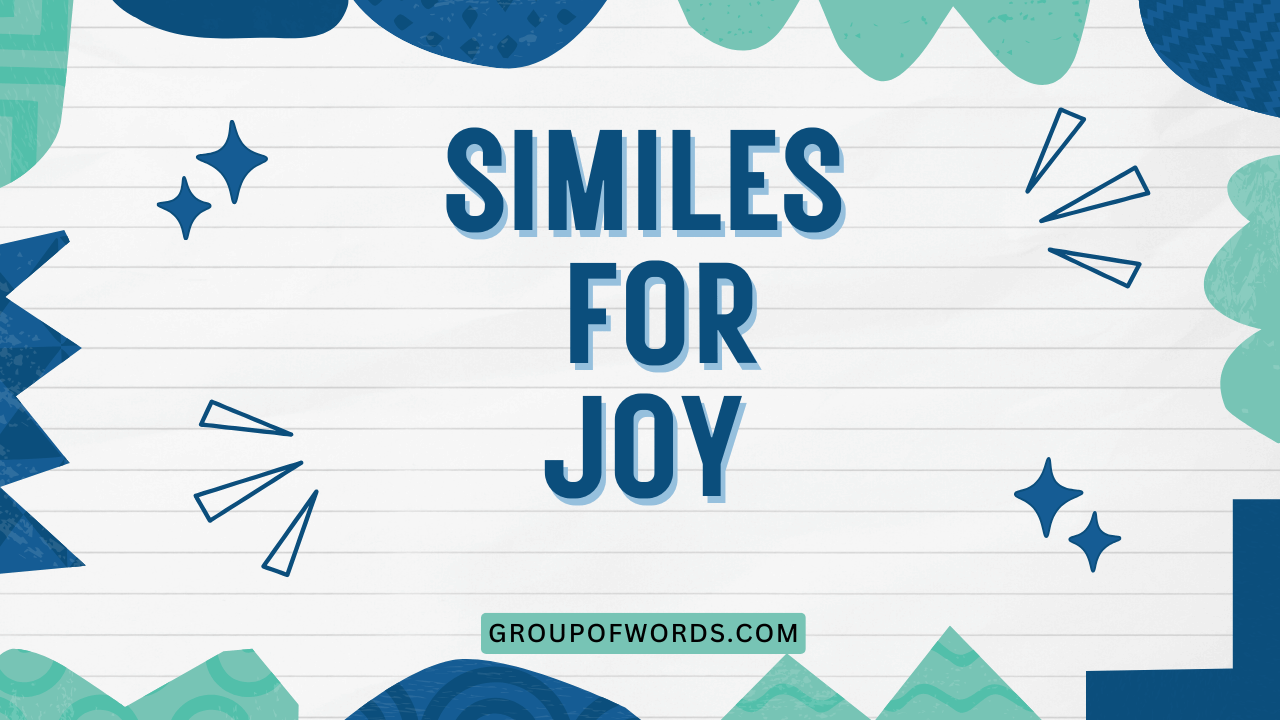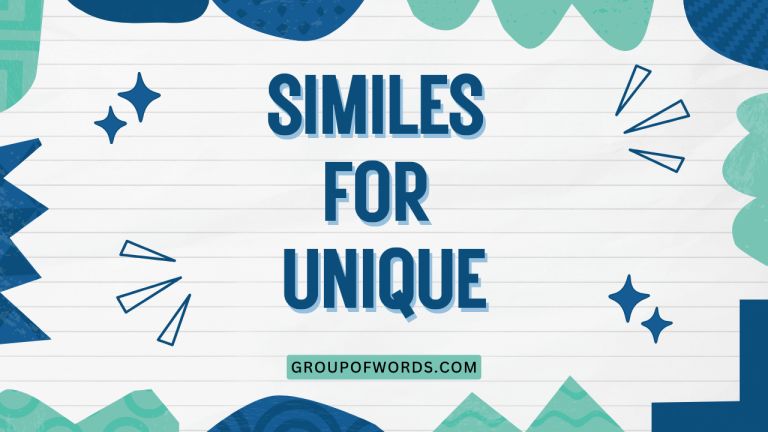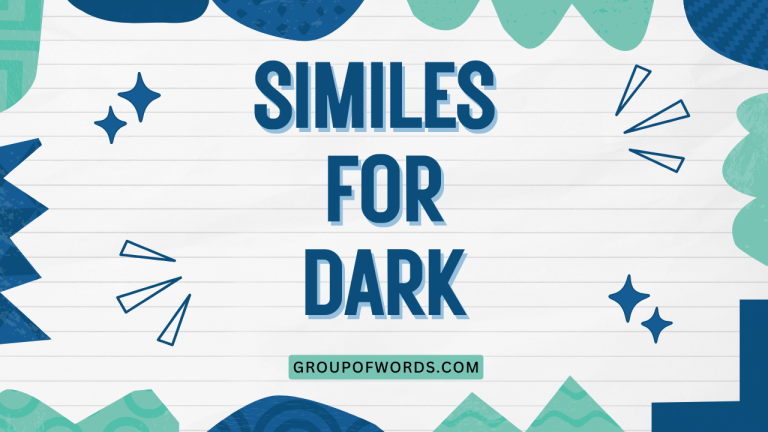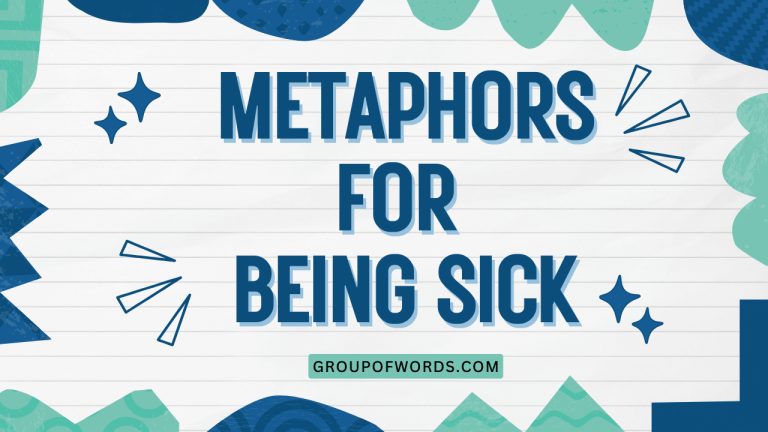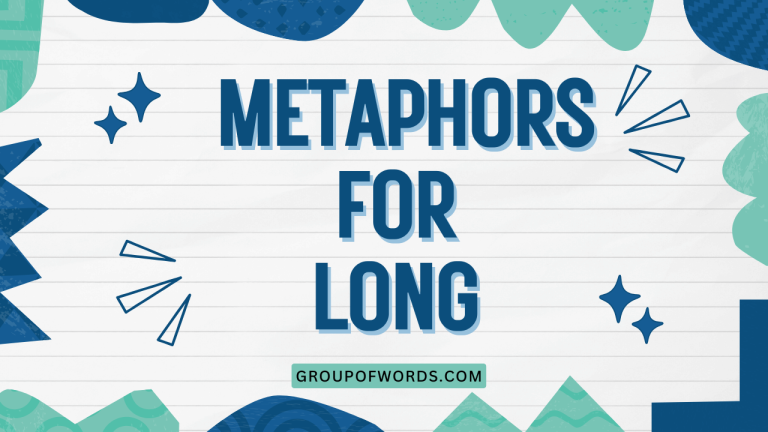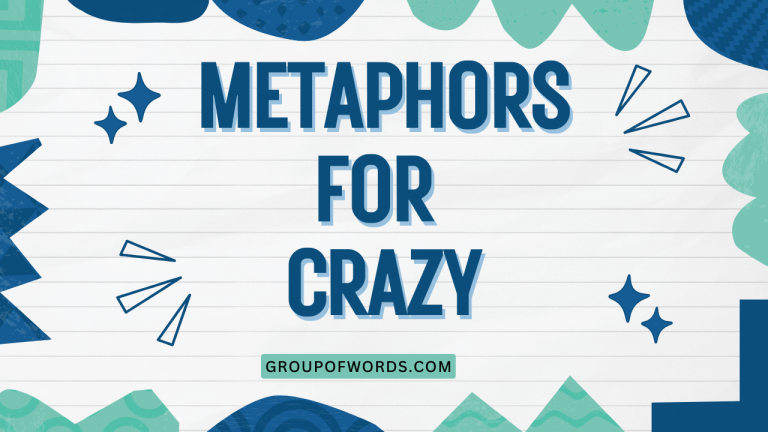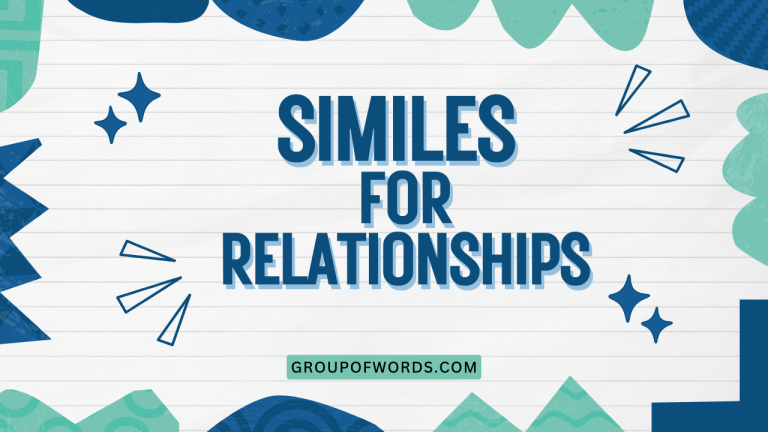Similes for Joy: A Comprehensive Guide to Expressing Happiness
Joy is a fundamental human emotion, and the English language offers a multitude of ways to express it. Among the most vivid and engaging are similes, which use comparisons to paint a picture of happiness in the reader’s mind.
Mastering the use of similes for joy can significantly enhance your writing and speaking, making your expressions more colorful and impactful. This article will delve into the definition, structure, types, and usage of similes specifically tailored to convey joy, providing you with the tools to articulate happiness in diverse and creative ways.
Whether you’re an English language learner or a seasoned writer, this guide will equip you with a deeper understanding and appreciation for the art of expressing joy through simile.
Table of Contents
- Introduction
- Definition of Simile
- Structural Breakdown of Similes
- Types of Similes for Joy
- Examples of Similes for Joy
- Usage Rules for Similes
- Common Mistakes with Similes
- Practice Exercises
- Advanced Topics in Simile Usage
- Frequently Asked Questions
- Conclusion
Introduction
Expressing joy effectively is crucial in both personal and professional contexts. Similes offer a powerful way to amplify the feeling of happiness by drawing comparisons to relatable and evocative imagery.
This article will provide a comprehensive exploration of similes specifically used to convey joy, enabling you to articulate your emotions with greater precision and flair. From understanding the basic definition and structure of similes to exploring advanced usage techniques, this guide is designed to enhance your understanding and application of this valuable literary device.
By mastering the art of using similes for joy, you can elevate your writing and speaking, making your expressions more engaging and memorable.
Definition of Simile
A simile is a figure of speech that directly compares two different things using the words “like” or “as.” Its primary function is to create a vivid image or convey a specific feeling by associating the target subject with something more familiar or evocative. Similes are essential tools in descriptive writing and speech, allowing for more nuanced and impactful communication.
They differ from metaphors, which imply a similarity without using “like” or “as,” and analogies, which explain complex relationships through comparison.
In the context of expressing joy, a simile helps to amplify the feeling by comparing it to something inherently joyful or pleasant. For instance, saying someone is “as happy as a lark” immediately conjures an image of carefree, exuberant joy.
Understanding the definition and function of similes is the first step in mastering their use for expressing a wide range of emotions, including joy.
Structural Breakdown of Similes
A simile typically consists of three main components: the subject (the thing being described), the linking word (“like” or “as”), and the referent (the thing the subject is being compared to). The structure is straightforward: Subject + Linking Word + Referent. Recognizing this structure allows for the easy creation and identification of similes in writing and speech. The effectiveness of a simile lies in the aptness and vividness of the comparison.
For example, in the simile “She was as happy as a clam,” “she” is the subject, “as” is the linking word, and “a clam” (traditionally, a happy clam at high tide) is the referent. The comparison suggests a state of complete contentment and satisfaction.
By understanding this basic structure, you can craft your own similes to express joy in a variety of creative and engaging ways. The key is to choose referents that resonate with the desired feeling and create a clear, understandable comparison.
Types of Similes for Joy
Similes for joy can be categorized based on the type of imagery they evoke. Here are a few common categories:
Nature-Based Similes
These similes compare joy to elements of nature, such as animals, plants, or weather. They often evoke a sense of freedom, growth, and vitality.
Abstract Similes
These similes compare joy to abstract concepts like light, music, or freedom. They often convey a sense of transcendence or euphoria.
Everyday Object Similes
These similes compare joy to common, everyday objects or experiences. They can be particularly effective in creating relatable and accessible expressions of happiness.
Emotional Similes
These similes compare joy to other emotions or states of being. They help to define joy by relating it to similar feelings.
Examples of Similes for Joy
The following tables provide extensive examples of similes for joy, organized by category. Each example is designed to illustrate the diverse ways in which similes can be used to express happiness.
Nature-Based Similes for Joy
The table below showcases similes that draw inspiration from the natural world to depict joy. These examples leverage the inherent beauty and vibrancy of nature to amplify the feeling of happiness.
| Simile | Explanation |
|---|---|
| As happy as a lark | Conveys carefree, exuberant joy. |
| As joyful as a spring morning | Suggests freshness, renewal, and optimism. |
| As delighted as a bird in flight | Implies freedom, lightness, and unrestrained happiness. |
| As cheerful as a babbling brook | Conveys a sense of constant, gentle happiness. |
| As content as a cat in the sun | Suggests peaceful, quiet satisfaction. |
| As radiant as a sunflower | Implies beaming, bright joy. |
| As thrilled as a puppy with a new toy | Conveys excitement and boundless energy. |
| As gleeful as a child on a swing | Suggests simple, innocent happiness. |
| As pleased as a bee in a flower garden | Implies being in a state of perfect contentment and abundance. |
| As serene as a calm lake | Conveys peaceful, undisturbed joy. |
| As tickled as grass in the wind | Implies a light, playful happiness. |
| As bubbly as a mountain stream | Suggests lively, effervescent joy. |
| As sunny as a summer’s day | Conveys warmth, brightness, and optimism. |
| As lighthearted as a feather in the breeze | Implies a carefree, buoyant happiness. |
| As elated as a climber reaching the summit | Suggests triumph and a sense of accomplishment. |
| As refreshed as a forest after rain | Conveys renewal and invigoration. |
| As carefree as a dandelion seed floating in the air | Implies a lack of worry and a sense of freedom. |
| As grateful as the earth after a rainfall | Suggests deep appreciation and contentment. |
| As animated as a hummingbird around nectar | Conveys vibrant energy and enthusiasm. |
| As invigorated as a swimmer in the ocean | Implies revitalization and exhilaration. |
| As happy as a clam at high tide | Suggests complete satisfaction and security. |
| As delighted as a squirrel finding a nut | Conveys simple, unexpected joy. |
| As peaceful as a forest glade | Implies tranquility and contentment. |
Abstract Similes for Joy
This table provides similes that compare joy to abstract concepts, such as light, music, or freedom. These similes often evoke a sense of transcendence or euphoria.
| Simile | Explanation |
|---|---|
| As bright as sunshine | Conveys radiant, illuminating joy. |
| As light as a feather | Suggests a feeling of lightness and freedom from worry. |
| As free as a bird | Implies unrestrained joy and liberation. |
| As clear as a bell | Conveys pure, unadulterated happiness. |
| As harmonious as a perfectly tuned orchestra | Suggests a sense of inner peace and balance. |
| As vibrant as a rainbow | Implies colorful, multifaceted joy. |
| As uplifting as a gospel choir | Conveys a sense of spiritual elevation and inspiration. |
| As boundless as the sky | Suggests limitless joy and potential. |
| As sparkling as champagne | Implies effervescent, celebratory joy. |
| As warm as a loving embrace | Conveys comfort, security, and affection. |
| As resonant as a perfectly struck chord | Implies deep, meaningful joy. |
| As effervescent as laughter | Suggests bubbly, contagious happiness. |
| As radiant as a star | Conveys brilliance and captivating joy. |
| As weightless as a dream | Implies a surreal, blissful happiness. |
| As intoxicating as love | Suggests an overwhelming, captivating joy. |
| As pure as innocence | Conveys simple, uncorrupted happiness. |
| As liberating as forgiveness | Implies freedom from burdens and past grievances. |
| As empowering as knowledge | Suggests confidence and capability. |
| As expansive as the universe | Conveys limitless potential and possibility. |
| As soothing as a lullaby | Implies comfort and tranquility. |
| As captivating as a great story | Suggests being completely absorbed in joy. |
| As fulfilling as a life well-lived | Conveys deep satisfaction and contentment. |
| As magical as a fairy tale | Implies enchantment and wonder. |
Everyday Object Similes for Joy
This table provides similes that compare joy to common, everyday objects or experiences. These similes can be particularly effective in creating relatable and accessible expressions of happiness.
| Simile | Explanation |
|---|---|
| As comfortable as an old shoe | Conveys relaxed, familiar happiness. |
| As satisfying as a warm cup of coffee on a cold day | Suggests simple, comforting joy. |
| As exciting as opening a present | Implies anticipation and delight. |
| As welcome as a paycheck on payday | Conveys relief and satisfaction. |
| As easy as pie | Suggests effortless, stress-free happiness. |
| As fun as a barrel of monkeys | Implies playful, boisterous joy. |
| As cozy as a fireplace in winter | Conveys warmth, comfort, and contentment. |
| As rewarding as finishing a difficult task | Suggests accomplishment and satisfaction. |
| As sweet as candy | Implies simple, pleasurable happiness. |
| As refreshing as a cold drink on a hot day | Conveys revitalization and relief. |
| As delightful as a surprise party | Suggests unexpected joy and excitement. |
| As thrilling as a rollercoaster ride | Implies exhilarating, adrenaline-pumping joy. |
| As comforting as a mother’s hug | Conveys security, love, and reassurance. |
| As peaceful as a quiet evening at home | Suggests tranquility and contentment. |
| As satisfying as a hearty meal | Implies fulfillment and contentment. |
| As enjoyable as a good book | Conveys intellectual stimulation and pleasure. |
| As relaxing as a warm bath | Suggests stress relief and comfort. |
| As pleasant as a walk in the park | Implies gentle exercise and connection with nature. |
| As exciting as winning the lottery | Conveys extreme luck and fortune. |
| As comforting as a familiar song | Suggests nostalgia and emotional connection. |
| As satisfying as a job well done | Implies accomplishment and pride. |
| As delightful as a child’s laughter | Conveys innocent and pure joy. |
Emotional Similes for Joy
This table provides similes that compare joy to other emotions or states of being. These similes help to define joy by relating it to similar feelings.
| Simile | Explanation |
|---|---|
| As content as a purring cat | Conveys deep satisfaction and relaxation. |
| As peaceful as a sleeping baby | Suggests tranquility and innocence. |
| As excited as a child on Christmas morning | Implies anticipation, wonder, and delight. |
| As grateful as a survivor | Conveys deep appreciation for life. |
| As enthusiastic as a cheerleader | Suggests passionate support and energy. |
| As hopeful as a sunrise | Implies optimism and new beginnings. |
| As confident as a lion | Conveys self-assurance and strength. |
| As loving as a parent | Suggests deep affection and care. |
| As proud as a peacock | Implies satisfaction in one’s achievements or appearance. |
| As serene as a monk in meditation | Conveys inner peace and mindfulness. |
| As thankful as a person receiving help | Suggests gratitude and appreciation. |
| As fulfilled as a person achieving their dreams | Implies deep satisfaction and accomplishment. |
| As blessed as a person surrounded by loved ones | Conveys a sense of gratitude and connection. |
Usage Rules for Similes
While similes are a creative tool, there are some guidelines to ensure their effective use. Clarity is paramount; the comparison should be easily understood by the reader. Originality can make your writing more engaging, but avoid overly obscure references that might confuse your audience. Appropriateness is also key; the simile should be relevant to the context and tone of your writing. Avoid cliches, which can make your writing sound uninspired. Aim for fresh, vivid comparisons that enhance the reader’s understanding and appreciation of the emotion you’re trying to convey.
Also, be mindful of cultural context. A simile that resonates in one culture might not have the same impact in another.
Consider your audience and choose comparisons that are likely to be universally understood or at least easily relatable. Finally, use similes sparingly.
Overusing them can dilute their impact and make your writing feel forced or artificial. Use them strategically to highlight key moments or emotions and to add color and depth to your descriptions.
Common Mistakes with Similes
One common mistake is using clichéd similes. Instead of saying “as happy as a clam,” try something more original, like “as happy as a child seeing snow for the first time.” Another mistake is using illogical comparisons. Ensure that the comparison makes sense and that the two things being compared share a relevant characteristic. For example, comparing joy to a rock would be illogical because rocks are generally associated with coldness and immobility. Finally, avoid overusing similes. Too many similes can make your writing sound repetitive and detract from the overall message.
Here’s a table illustrating common mistakes with similes:
| Incorrect | Correct | Explanation |
|---|---|---|
| As happy as a clam | As happy as a child on Christmas morning | Avoid clichés; opt for original comparisons. |
| As joyful as a rock | As joyful as a bubbling stream | Ensure the comparison is logical and relevant. |
| The day was as bright as the sun, as cheerful as a lark, and as lovely as a rose. | The day was as bright as the sun, filling everyone with warmth. | Avoid overuse; use similes sparingly for maximum impact. |
Practice Exercises
Test your understanding of similes for joy with these practice exercises. Fill in the blanks to complete the similes, or rewrite the sentences using a simile to express the feeling of joy.
Exercise 1: Fill in the Blanks
Complete the following similes using the words provided in the word bank.
- She was as happy as a ________.
- He felt as joyful as a ________ in flight.
- The music was as uplifting as a ________.
- Their laughter was as contagious as ________.
- His smile was as bright as ________.
Word Bank: sunshine, feather, bird, choir, bubbles.
Exercise 2: Rewrite the Sentences
Rewrite the following sentences using a simile to express the feeling of joy.
- She was extremely happy about the news.
- He felt a great sense of freedom.
- The children were very excited about the trip.
- The atmosphere was filled with happiness.
- She was in a state of complete contentment.
Exercise 3: Create Your Own Similes
Create your own similes to describe the following situations, focusing on expressing the feeling of joy.
- Winning a competition
- Spending time with loved ones
- Achieving a personal goal
- Experiencing a beautiful sunset
- Listening to your favorite music
Here are the answers to the practice exercises:
Answer Key
| Exercise | Answer |
|---|---|
| Exercise 1 |
|
| Exercise 2 |
|
| Exercise 3 |
(Answers will vary, but here are some examples):
|
Advanced Topics in Simile Usage
For advanced learners, consider exploring the use of extended similes, where the comparison is developed over several sentences or even paragraphs. This allows for a more detailed and nuanced expression of joy. Also, experiment with subverting expectations by creating similes that initially seem contradictory or unexpected but ultimately reveal a deeper truth about the emotion. For example, “His joy was as quiet as a snowfall,” suggesting a serene, understated happiness. Furthermore, consider the use of multiple similes within a single piece of writing to create a richer tapestry of imagery and emotion. However, use this technique sparingly to avoid overwhelming the reader.
Another advanced technique is to combine similes with other figures of speech, such as metaphors and personification, to create a more complex and layered expression of joy. For example, you could say, “Her joy was a radiant sun, as warm as a loving embrace, personifying her entire being with happiness.” By mastering these advanced techniques, you can elevate your writing and speaking to a new level of artistry and expressiveness.
Frequently Asked Questions
Here are some frequently asked questions about using similes to express joy:
- What is the difference between a simile and a metaphor?
A simile directly compares two things using “like” or “as,” while a metaphor implies a comparison without using these words. For example, “She is as bright as the sun” (simile) vs. “She is the sun” (metaphor).
- How can I avoid using clichéd similes?
Brainstorm original comparisons that are specific and relevant to the context. Think about unique qualities or characteristics that can be used to create a fresh and vivid image.
- Is it okay to use similes in formal writing?
Similes can be used in formal writing, but use them sparingly and ensure they are appropriate for the tone and audience. Avoid overly informal or colloquial comparisons.
- How can I make my similes more impactful?
Choose vivid and evocative imagery that resonates with the reader. Consider using sensory details to create a more immersive experience.
- Can I use similes to describe negative emotions as well?
Yes, similes can be used to describe a wide range of emotions, including negative ones. The key is to choose comparisons that accurately reflect the feeling you’re trying to convey.
- How many similes should I use in a piece of writing?
Use similes sparingly to avoid overwhelming the reader. Focus on quality over quantity and use them strategically to highlight key moments or emotions.
- What if I can’t think of a good simile?
Try brainstorming different aspects of the emotion you want to describe. Think about related images, sounds, smells, and other sensory details that can help you create a comparison.
- Are there any cultures where similes are not appropriate?
While similes are generally understood across cultures, the specific comparisons used may not always translate effectively. Be mindful of cultural context and choose comparisons that are likely to be universally understood or easily relatable.
Conclusion
Mastering the art of using similes for joy can significantly enhance your ability to express happiness in a vivid and engaging way. By understanding the definition, structure, types, and usage rules of similes, you can craft more impactful and memorable expressions.
Remember to avoid clichés, choose logical comparisons, and use similes sparingly to maximize their effectiveness. Practice the exercises provided in this guide to hone your skills and experiment with advanced techniques to elevate your writing and speaking.
With dedication and creativity, you can unlock the power of similes to articulate the nuances of joy and share your emotions with greater precision and flair.
Ultimately, the goal is to use similes to create a connection with your audience and to bring your writing to life. By choosing comparisons that resonate with their experiences and emotions, you can make your expressions of joy more meaningful and impactful.
So, embrace the challenge, explore the possibilities, and let your creativity shine through as you master the art of using similes for joy.
